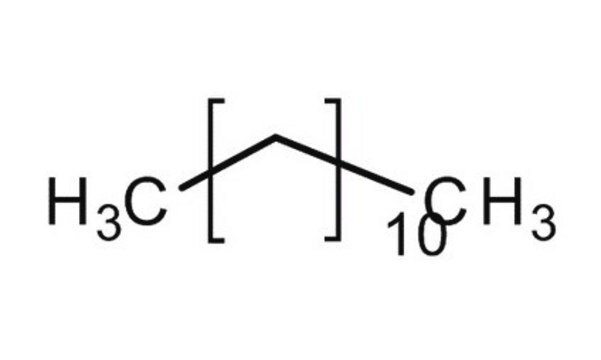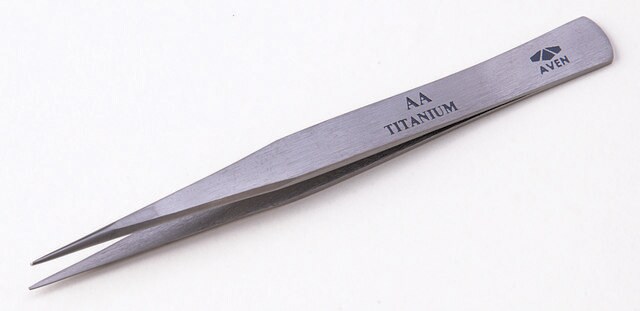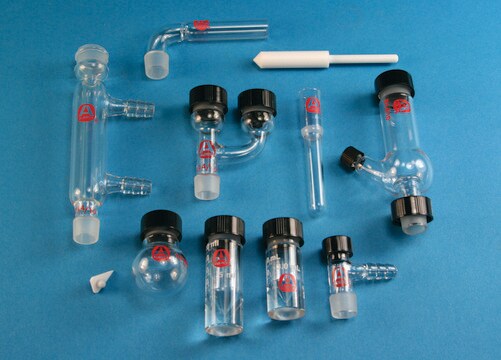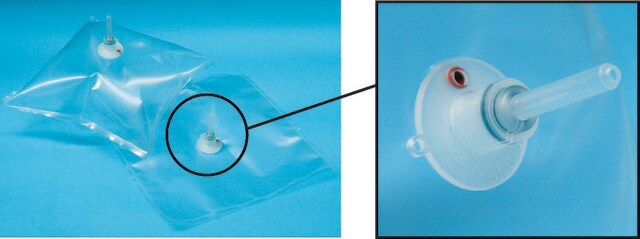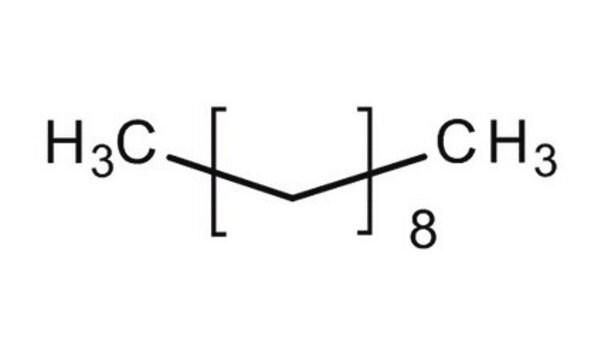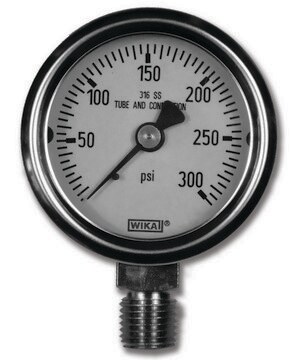About This Item
Recommended Products
vapor density
5.96 (vs air)
Quality Level
vapor pressure
1 mmHg ( 47.8 °C)
product line
ReagentPlus®
Assay
≥99%
form
liquid
autoignition temp.
401 °F
expl. lim.
8 %
technique(s)
microbiological culture: suitable
refractive index
n20/D 1.421 (lit.)
bp
215-217 °C (lit.)
mp
−9.6 °C (lit.)
density
0.75 g/mL at 25 °C (lit.)
SMILES string
CCCCCCCCCCCC
InChI
1S/C12H26/c1-3-5-7-9-11-12-10-8-6-4-2/h3-12H2,1-2H3
InChI key
SNRUBQQJIBEYMU-UHFFFAOYSA-N
Looking for similar products? Visit Product Comparison Guide
General description
Application
- Extraction of hydrocarbons from Botryococcus braunii.
- Pd/C catalyzed deoxygenation of stearic acid to synthesize biodiesel.
- Oxidativede sulfurization of dibenzothiophenes.
Legal Information
Signal Word
Danger
Hazard Statements
Precautionary Statements
Hazard Classifications
Asp. Tox. 1
Supplementary Hazards
Storage Class Code
10 - Combustible liquids
WGK
WGK 1
Flash Point(F)
158.0 °F - Pensky-Martens closed cup
Flash Point(C)
70 °C - Pensky-Martens closed cup
Regulatory Listings
Regulatory Listings are mainly provided for chemical products. Only limited information can be provided here for non-chemical products. No entry means none of the components are listed. It is the user’s obligation to ensure the safe and legal use of the product.
FSL
Group 4: Flammable liquids
Type 3 petroleums
Hazardous rank III
Water insoluble liquid
ISHL Indicated Name
Substances Subject to be Indicated Names
ISHL Notified Names
Substances Subject to be Notified Names
JAN Code
D221104-2ML:
D221104-VAR:
D221104-500ML:
D221104-100ML:
D221104-2.5L:
D221104-BULK:
Choose from one of the most recent versions:
Already Own This Product?
Find documentation for the products that you have recently purchased in the Document Library.
Customers Also Viewed
Our team of scientists has experience in all areas of research including Life Science, Material Science, Chemical Synthesis, Chromatography, Analytical and many others.
Contact Technical Service